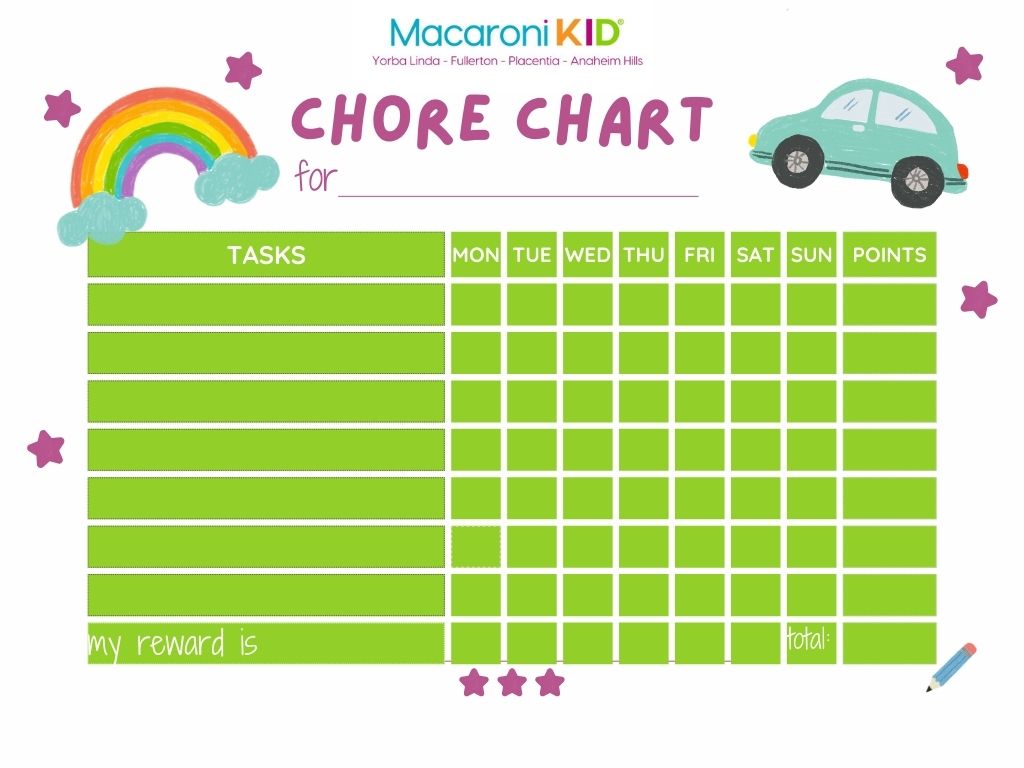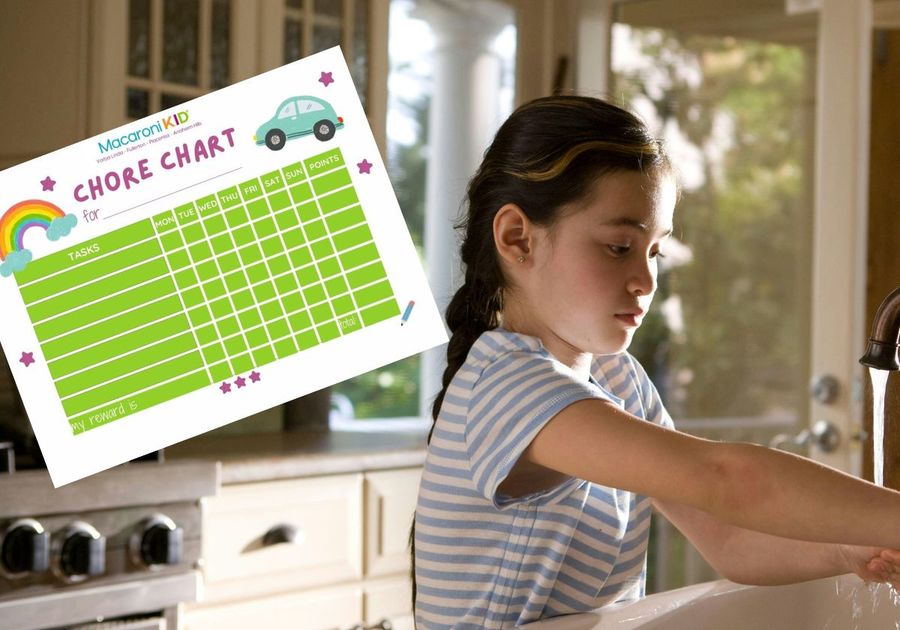As parents, teaching kids responsibility from a young age is crucial to their development. One of the best ways to instill these values is by involving them in household chores. But we know—getting kids excited about doing chores can be a challenge! That's where chore charts come in. They make the process fun, organized, and rewarding.
In this article, we’ll break down how to create a chore chart that works for your family, along with a sample chart to get you started.
 |
Why Use a Chore Chart?
- Builds Responsibility: Kids learn that being part of a household means contributing to its upkeep.
- Develops Life Skills: Cleaning, organizing, and maintaining tasks teach children essential skills they’ll use for the rest of their lives.
- Encourages Accountability: When a child can visually see what needs to be done, it reinforces their accountability to complete the task.
- Boosts Confidence: Completing chores gives kids a sense of accomplishment and pride.
Steps to Create an Effective Chore Chart
- Choose Age-Appropriate Tasks
Chores should match the child’s age and ability. You don’t want your five-year-old cleaning the bathroom unsupervised! For example:- Ages 2-4: Picking up toys, putting laundry in the basket, watering plants
- Ages 5-7: Making the bed, feeding pets, dusting low surfaces
- Ages 8-10: Vacuuming, setting the table, taking out the trash
- Ages 11+: Cleaning their room, doing laundry, washing dishes
This doesn't necessarily have to be limited to cleaning either! I've used this chart for academic-related goals as well, such as reading twenty minutes a day or completing a section of worksheets in a school break workbook I have them use.
 |
- Incorporate Rewards
Rewards don’t always have to be monetary. You could offer screen time, a family movie night, or extra playtime. Rewards provide motivation and help teach kids the concept of earning something through effort. For my kids, I have incorporated family outings as rewards for keeping on task - anything from spending time at the park to going to their favorite arcade. - Set a Schedule
Consistency is key. Decide how often each chore should be completed. For younger kids, daily tasks might be simple, while older children can handle more complex weekly chores. - Make It Fun!
Adding a playful element to chore charts—such as stickers, stars, or colors—can make the process engaging. Use colorful markers or let your kids decorate their own chart to make them feel involved. - Follow Up with Praise
Positive reinforcement goes a long way. A simple “Good job on folding the laundry!” can make kids feel proud of their efforts and eager to continue helping.
Creating a chore chart for your kids helps establish routines and sets them up for success later in life. With a little creativity and consistency, you’ll turn the dreaded "chore" into a productive and even enjoyable part of your family’s daily life!
Get our FREE Kids' Customizable Chore Chart here to get you started!
 |



